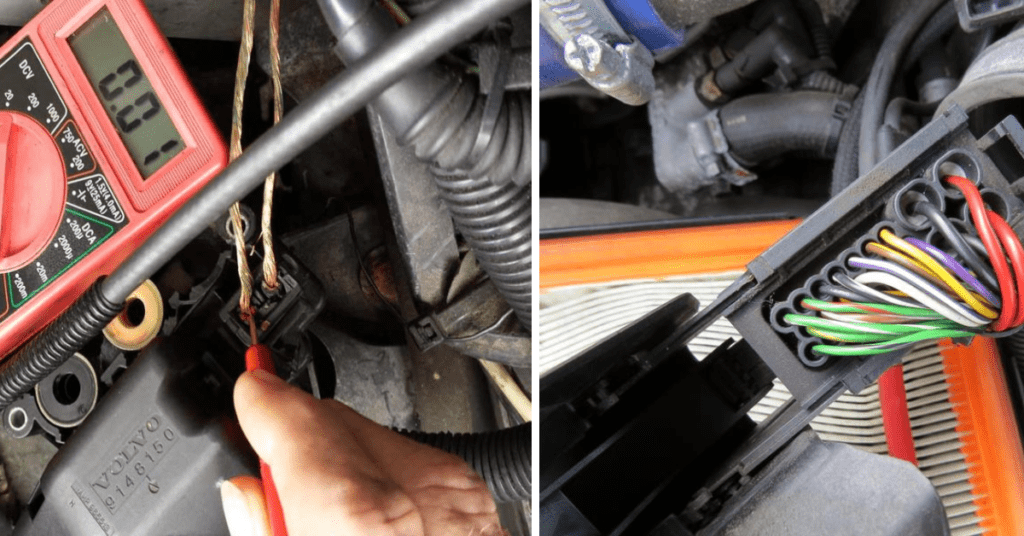How to Test Abs Module
When it comes to the safety of your vehicle, few systems are as consequential as the Antilock Braking System, or ABS. Designed to prevent your wheels from locking up during braking, the ABS has been a standard feature in modern vehicles for decades, a technology once reserved for high-end models. However, despite its widespread integration, the ABS is not immune to malfunctions, and testing this vital system is crucial for every car owner, enthusiast, and DIY mechanic. This comprehensive guide will walk you through how to test ABS module, ensuring that you can hit the road with confidence in your vehicle’s braking capabilities.

Tools You Need to Test ABS
Before we jump into testing your ABS module, you’ll want to make sure you have the right tools for the job. Here are the essentials:
- OBD-II scanner capable of retrieving ABS codes
- Digital multimeter for measuring voltage and resistance
- Vehicle-specific service manual
- Safety equipment such as gloves and eyewear
- Cleaning supplies for sensor and wheel surfaces
- Assortment of wrenches and sockets
- Jack stands and a hydraulic floor jack
- Wheel chocks for safety while lifting the vehicle
- A comfortable workspace with adequate lighting
Having these tools on hand will ensure that you can perform a thorough and effective examination of your car’s ABS system.
Preliminary Checks Before Testing
Before you begin testing the ABS module, there are a few things you should check to ensure that you’re diagnosing your system’s issues accurately.
- Verify that all fuses and relays related to the ABS are in good working condition.
- Check the brake fluid level, as low fluid can trigger an ABS warning light.
- Visually inspect the ABS sensors and their wiring for damage or signs of corrosion.
- Look at your vehicle’s history to see if any previous maintenance or repairs may have affected the ABS.
These preliminary inspections can save you time and effort when you get down to testing the system.
Methods to Test ABS Module
The method for testing your car’s ABS module involves several steps that measure the system’s ability to function in different scenarios. Some of the most common tests include:
- A visual inspection of the module and its connections for signs of wear or damage.
- Use of an OBD-II scanner to retrieve error codes stored in the ABS’s computer.
- Inspection of the hydraulic control unit for leaks or malfunctions.
- A full functionality test, including the activation of the ABS during a controlled stop or on a slippery surface.
Each of these tests is an important component of a comprehensive evaluation of your ABS system.
4 Easy Step-by-Step ABS Module Testing Guide
For those who are ready to roll up their sleeves and get hands-on, let’s break down the ABS module testing process into actionable steps.
Step 1: Preparation: Vehicle Setup and Safety
Safety should always be the top priority when working on your vehicle. Begin by ensuring that you’re working on a level surface and that the parking brake is engaged. Next, locate your vehicle’s OBD-II port and clear any obstructions that may prevent the scanner from establishing a connection. Finally, open the hood and disconnect the battery to prevent electrical shocks during testing.
Step 2: Accessing the ABS Module
our vehicle’s ABS module may be located in several different places, but common locations include the engine bay or the cabin near the brake pedal. Refer to your service manual for specific instructions on how to access the module safely, as this process can vary significantly from one model to another.
Step 3: Testing Voltage and Resistance
With the ABS module accessible, set your digital multimeter to the Volts DC setting and test the power and ground connections for proper voltage. Any significant deviations from the manufacturer’s specifications may indicate a problem with the power supply to the ABS module. This step also involves checking the resistance in the wiring harness to ensure there isn’t a short or open circuit, potentially caused by a chafed wire or other damage.
Step4: Inspecting Electrical Connections
A visual inspection of the electrical connectors at the ABS module is crucial. Look for loose or corroded pins that could interfere with the signal from the wheel speed sensors. Consider using a contact cleaner to ensure a good connection if necessary.
ABS Wheel Speed Sensors Testing
The wheel speed sensors are the frontline components of the ABS system, serving as the eyes and ears that detect the rotational speed of each wheel. To test the wheel speed sensors:
- Jack up each wheel and locate the sensor.
- Using the digital multimeter, test for AC voltage generated by the sensor while manually spinning the wheel.
- Compare the readings for each sensor to the vehicle’s specifications, looking for discrepancies that may indicate a problem with the sensor or its mounting.
Diagnosing Common ABS Problems
ABS issues can stem from a variety of sources, with some of the most common problems being:
- Sensor malfunction due to dirt, metal shavings, or improper installation.
- Electrical problems like damaged wires or connector issues.
- Hydraulic unit failures such as solenoid valve or pump malfunctions.
- Controller issues, which may involve the module itself or the software that controls it.
By understanding these common issues, you can more effectively diagnose and rectify ABS malfunctions.
Fixing or Replacing Faulty ABS Components
Once you’ve identified the source of your ABS problems, it’s time to take action. Depending on the issue, you may be able to:
- Clean the sensors and their mounting surfaces to ensure accurate readings.Repair or replace damaged wiring or connectors.
- Bleed the ABS unit to remove air pockets in the hydraulic system.
- Replace the ABS module if it’s the root cause of the malfunction.
- Always use genuine or high-quality aftermarket parts to maintain the integrity of your ABS system.
Tips for Preventing ABS Failures
The best defense against ABS system failures is preventative maintenance. Some tips to keep your system running smoothly include:
- Periodically checking the condition of the wheel speed sensors and their wiring.
- Keeping the ABS module clean and dry to prevent corrosion.
- Promptly addressing any issues with your car’s brakes, such as noise or reduced performance.
These practices can help you catch and resolve potential ABS problems before they become a safety hazard.
Frequently Asked Questions about ABS Testing
How often should I test my ABS?
Regular testing is not necessary, but checking the system when you notice any unusual behavior or after significant maintenance can be beneficial.
Why do I need to test my ABS module?
Testing your ABS module allows you to catch and address potential safety issues related to your braking system.
What are the signs of ABS module failure?
Common symptoms of ABS module failure include an illuminated ABS warning light, a non-responsive ABS system, and unusual braking behavior on slippery surfaces.
Can you test ABS module with multimeter?
Yes, a digital multimeter can be used to test the voltage and resistance of the ABS module as part of an overall testing process.
Conclusion
Understanding and testing your car’s ABS module is an essential aspect of vehicle maintenance and safety. By following the detailed steps in this guide, you can ensure that your car’s ABS system is working as intended. Remember, when it comes to vehicle safety, knowledge is power, and the time and effort you invest in understanding your car’s systems will pay off in peace of mind on the road. Whether you’re an experienced DIY mechanic or just starting out, testing your ABS module is a skill worth developing, and this guide is your roadmap to success.






